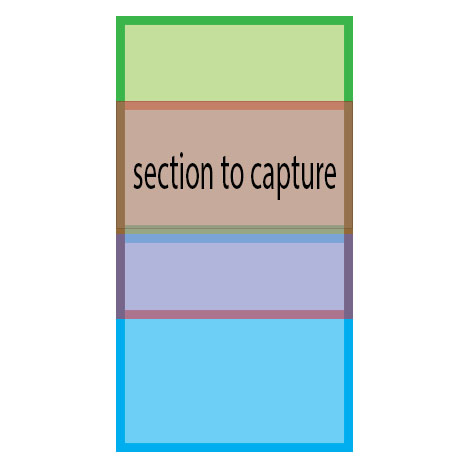3D reconstruction of your scene will be best when each section is shot from at least 3 different perspectives. Capturing successive images with a minimum 60% overlap can often produce acceptable results, often including a minimum 20% orthogonal overlap. This overlap ensures accuracy and is necessary for ReCap 360's Photo-to-3D and manual stitching services. Evaluate your scene while noting less-defined areas, such as sandy areas or thin, wiry objects (such as poles or fences) as these areas or specific elements might benefit from a higher overlap percentage. See below for an example:
Reconstruction of your scene requires each feature to be shot in at least 3 different perspectives to ensure a minimum 60% overall overlap, including a minimum 20% orthogonal overlap. This overlap ensures accuracy and is necessary for ReCap 360's Photo-to-3D and manual stitching services. Less-defined areas, such as sandy areas or thin, wiry objects such as poles or fences, might benefit from a higher overlap. See an example of an acceptable overlap below:

If there are difficult areas you intend to capture, you might need to seek alternate viewpoints and/or use manual capture methods to secure those parts of your scene.
Too little or too much overlap can produce lesser-quality reconstruction results. Not enough overlap will not allow your project to stitch properly and hold a general poor quality. Too much overlap (>80%) is usually considered redundant, as more than 3 perspectives of a point has not been shown to benefit most projects, and might successively require you to disburse the time to delete excessive images.
It is important to evaluate your scene and determine if all points relevant to it can be viewed well from 3 different perspectives. If there are questionable or occluded areas you intend to capture, you might need to use alternate viewpoints or practices to secure those parts of your scene.
Scene Materials
Certain materials and behaviors of materials might negatively affect reconstructing your UAV images into 3D photo projects. Essentially, this includes those of glossy, anisotropic, reflective, or moving character. These surfaces can tend to capture improperly through a lens, just as they appear different to our eyes depending on our angular perspective, lighting, and other factors. Because these materials often appear differently depending on changes in perspectives, they tend to show incomplete in raw imagery, thus risk having poor or no translation into 3D model reconstruction, whether it be photo or point cloud export.
There are certain facets that appeal best to 3D modeling. Defined, more textured surfaces, such as bricks, are ideal for captures intended for 3D reconstruction. Lesser defined surfaces, similar to a flat interior wall, are more difficult to produce, simply because of their lack of depth and having a generally more uniformed surface.